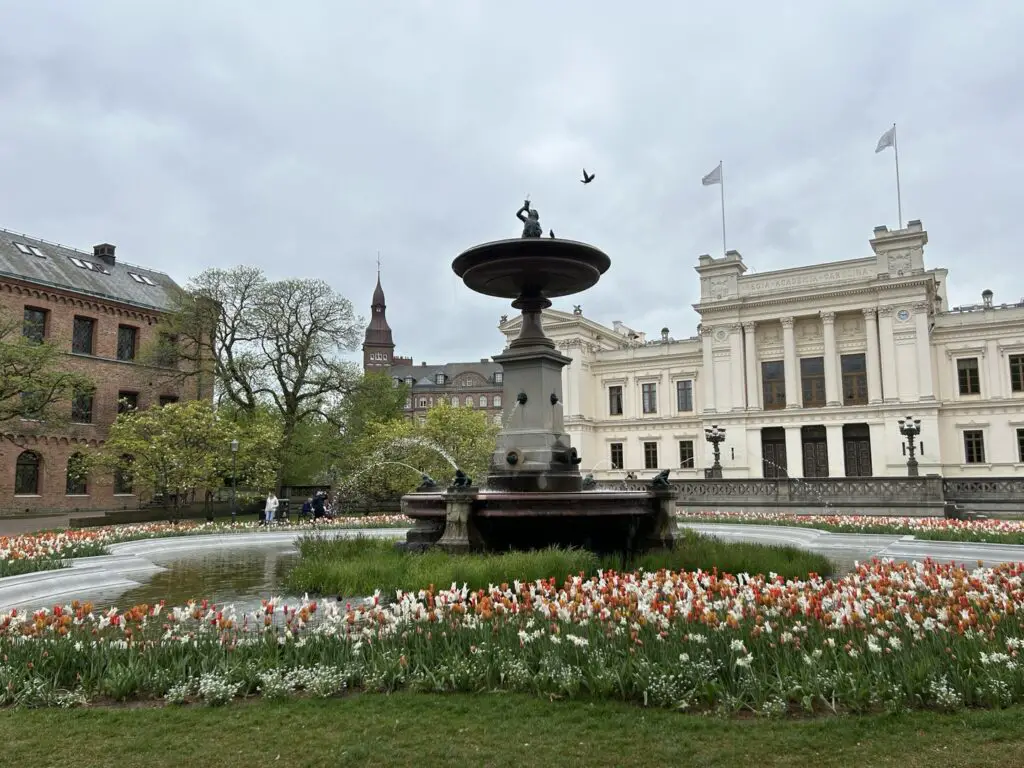Studying in Lund
Are you considering pursuing a Master’s degree in Sweden, specifically in Lund? Having navigated this journey myself, I’ve gathered valuable insights that might help you. If you have more questions about studying or living in Sweden, feel free to leave a comment, and I’ll address them in a separate Q&A session.
Tuition and Scholarships: Managing the Costs
One of the biggest challenges for non-European students is the cost of tuition. For a single semester, 775,000 SEK which is about 68000 EURO, 73000 USD. Given these high costs, it’s crucial to explore all available scholarships. The most common ones include:
- Global Scholarship: Offered by the university itself, this scholarship is available to international students.
- SI Scholarship: Provided by the Swedish Institute, this is available for students from specific countries. Check if your country qualifies.
- Check this link for scholarships: https://www.lunduniversity.lu.se/admissions/bachelors-and-masters-studies/scholarships-and-awards
I strongly recommend applying for as many scholarships as possible to alleviate the financial strain. Without financial aid, it’s challenging to manage both tuition and living expenses. Due to high tuition, you can see a lot of scholarship based non-European students.
Living Costs: High but Manageable
Budgeting and finding cost-effective ways to manage daily expenses are essential to make your stay more comfortable. Sweden is known for its high living costs, and Lund is no exception. Transportation fees vary, depending on distance and duration hour. If you travel around Lund with 24 hour ticket, it is about 45 SEK, Lund to Malmö about 80 SEK, Lund to Copenhagen is about 320 SEK. But there’s discount for students and monthly ticket(The above are student discounted ticket). For rent, depends on houses, but it is around 4000 SEK to 6000 SEK per month. Without housing guarantee, it would be kind of hard to find housing. So if you have one, make sure to use it! For dining out, I would say it cost around 150-320 SEK per person. It depends on restaurant so make sure to check before going. Alcohol is expensive..it gets cheaper if you buy it in Systembolaget(Swedish liquor shop), oh if you make yourself a dinner with groceries, it gets much cheaper.
Student Diversity: A European Focus
Lund University’s Master’s programs attract a diverse student pool, international students at masters level are about 44%, as a total it’s 25% (2024). As international students, you can see a lot of European students due to the tuition-free advantage for European Economic Area (EEA). In my program, more than half of the class consisted of European students. Of course, it differs by programs, if you are more curious about this, talking with students who are in the program would give you more vivid picture. Try Goin or unibuddy program for talking with current students.
Academic Intensity: Program-Dependent
The intensity of Master’s programs at Lund varies significantly by field of study. Some programs demand rigorous academic engagement, requiring at least eight hours of study each day. In my case, the initial period was particularly challenging, leaving little room for travel or leisure. The workload was heavy, often involving long hours of classes and self-study. Friends even remarked that I was studying in a “Korean style” due to my intensive schedule. Well I guess it’s Swedish style now.
However, some students, depending on their program, manage to balance their studies with travel and social activities, especially on weekends. Your experience will largely depend on your program’s specific demands and your personal approach to time management.
Classroom Dynamics: Active Participation and Informality
Classroom interactions at Lund are quite remarkable. Swedish students and international students actively participate in discussions, frequently asking questions and engaging with the material. They address professors by their first names, reflecting the horizontal culture in Sweden. This approach fosters a collaborative and open learning environment.
Initially, this active participation and the horizontal atmosphere were overwhelming. Adapting to the academic writing style and expectations took some time to adjust to their approach to coursework and reporting for me.
Navigating Challenges and Embracing Differences
Studying in Lund has been a rewarding yet challenging experience. The high tuition fees and living costs necessitate careful financial planning and scholarship applications. The diversity and academic intensity offer a rich educational environment, although adapting to the Swedish academic and social norms can be demanding.
For prospective students, my advice is to prepare financially, embrace the unique aspects of Swedish academic culture, and be open to the challenges and opportunities that come with studying in this beautiful and historic city. If you have any more questions or need further information, feel free to reach out, and I’ll be happy to help.

